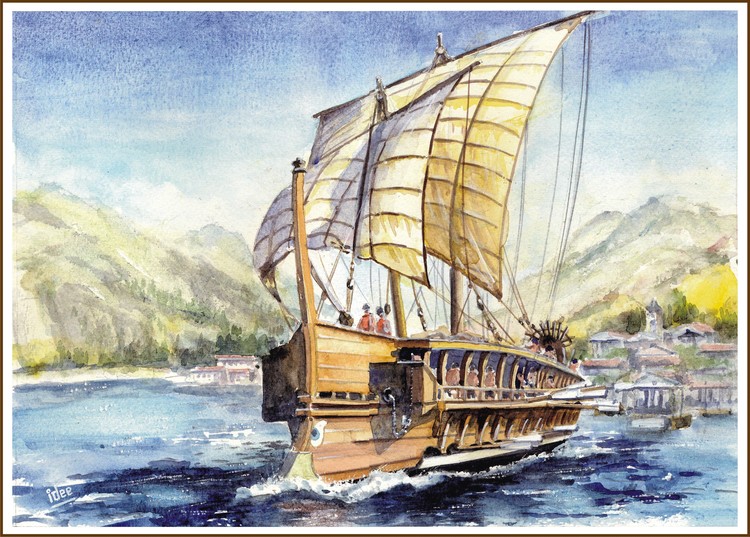- Ivo Depauw
- View Portfolio
- Image 321 of 664
- Added 20 Sep 2019
- 384 Views
- 6 Comments
- 2 Favorites
- Share This Image On...

The trireme is in fact a galley, known from antiquity and used in this form, from +/- 500 years before our time, by Greeks, Romans and Phoenicians. They were exceptionally sturdy ships for their time, built in oak or cedar wood and with a length of +/- 25 meters. To date, people are not sure what the name trireme actually means. It is assumed that it concerns the number of rows of rowers (Latin: triremis = three-rower), so there was a "bireme" with two rows of rowers, but there was also a "quinquereme", a boat with five rows of rowers, a ship that was impossible to build (???). Till there. On the Mediterranean sea, a sudden storm wind is not rare, even the tramontana can whip up the water, but in general this sea is known for its light wind or the total lack thereof. The galley is therefore typical of these southern European waters. These boats were mainly built as rowboats with auxiliary sails. Certainly because they were largely intended for military purposes. The bronze or iron ramsteven is no stranger to that. Not that there was no sailing, once a favorable wind raised the oars were brought in and the sails were hoisted (as may be seen from the picture). It was only possible to sail with half wind or wind from behind. The sails were reinforced with cross-fitted leather straps. Galleys rarely transported goods, because of the large crew there was simply a lack of space on board. There has already been a lot to do about the so-called "galley slaves". Recently it appears that only when the ship went to war there were criminals and slaves on the oars who were chained to the rowing banks. In the event of a possible loss of the ship, their chance of survival was practically nil. In peacetime, however, the soldiers or civilians rowed the ship. They just got their wages just like the infantry. Civilians who signed on to the ship automatically fell under the military regime and received the same wage as the soldiers, and they were also required to defend the ship when it was attacked. Piracy was a widespread phenomenon at the time. During the war, larger galleys were also built, equipped with a bowsprit with sail, with towers for archers and enter bridges, these warships were really fortified forts. That these ships were indeed seaworthy can be seen from the fact that in the beginning of our time, the invasion of the British islands under the Roman emperor, Julius Cesar, happened with such vessels. Galleries were used on the Mediterranean Sea well into the 17th century. Image size: 260 x 360 mm
5 of 6 Comments Show All 6 Comments
Linda Hammar-Del Favero 21 Sep 2019
The history of this glorified row boat is indeed interesting. The rowers must have prayed for a wind to fill the sails so they could get some sleep and a little to eat. Very good painting with mountains and port behind and ship off on adventure with a friendly wind.Sharon De Vore 21 Sep 2019
OUTSTANDING, IVO.Brenda Cumming 21 Sep 2019
amazing workMaria Anna Machado 20 Sep 2019
beautiful...great work...Barry Huyett 20 Sep 2019
I lie SHIPS! GREAT!!